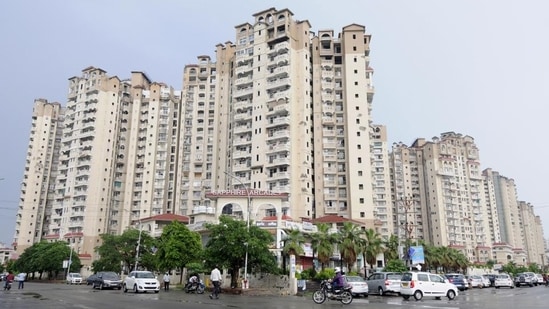India's commercial real estate sector: Outperforming in a global downturn
This article is authored by Rishabh Goel, managing director and partner and Yashi Tandon, lead knowledge analyst, team lead, BCG.
In 2023, global economic challenges led to significant downturns in the commercial real estate sector worldwide, with investments plummeting by 66% year-on-year. Major markets like the United States and Europe witnessed leasing activities drop by approximately 25%. The global commercial market is in crisis mode!

In stark contrast, India’s commercial real estate market demonstrated remarkable resilience and growth, attracting $5.4 billion in investments, the strongest performance since the pre-pandemic year of 2020. The office sector in India has been particularly vibrant, drawing over $3 billion in investments, a 53% increase from the previous year. This surge is primarily driven by the burgeoning demand from Global Capability Centers (GCCs) and robust leasing activities by Indian corporations, which now account for 46% of total market leasing activities.
The demand from GCCs has become a pivotal driver of growth within India’s office sector. As global companies seek efficient outsourcing solutions amid economic pressures, India's GCCs are rapidly expanding. Projected to grow at a compound annual growth rate (CAGR) of 10%, the GCC industry is expected to reach $715 billion by 2027, up from the current $465 – 510 billion. India holds a 30% share of the global GCC market and employs up to 2 million professionals.
The GCC model is also now evolving from primarily cost arbitrage/standardisation focused centers to customer experience and technology led hubs. This is driving an upscaling of the space per sqft in these developments as well as the spend per sq ft, thus further increasing the investment in Grade A commercial real estate.
Today, only 40-45% of Fortune 500 companies have GCCs so there is significant scope for penetration. Given Indian’s demographic advantage (we will add 80-90 Mn people to working age population by 2027), our estimates are that India will have 3.5-4 Mn workforce employed in GCCs over next 3-4 years which implies a doubling of the Grade A space required.
Another significant trend is the rising contribution of domestic investors and capital flowing into this space viz foreign capital historically. Data from Preqin highlights a sharp decline in foreign fund activity in India given global interest rate situation and geopolitical uncertainties. Despite these challenges, the Indian real estate sector remains robust and this resilience is in large part driven by increasing share of a new class of investors: ultra-high-net-worth individuals and family offices.
These investors are increasingly drawn to the tangible security of asset-backed investments and the regulated environment of Alternative Investment Funds (AIFs), significantly impacting the real estate market with approximately Rs. 3 trillion already invested. This shift underscores a dynamic transition in investment patterns, fostering a more domestically fueled growth in the sector.
Looking forward, we see a huge opportunity for Tier 2 towns to emerge as new centers of growth and commercial real estate investment. In the US, the headquarters for Fortune 500 companies are spread across 51 cities while in India the top corporates are all concentrated in 5-6 cities. While we’ve made good progress in transportation infrastructure, there is an urgent need to upgrade the urban infrastructure in these cities to increase liveability and attract both businesses and employees.
A shift is underway, with pioneering firms redirecting their focus to tier 2 cities, which have seen a twofold increase in investment flow, primarily for the acquisition of undeveloped land parcels. This trend underscores the need for local and regional developers to enhance their offerings and attract foreign investors, who generally prefer ready-to-lease or already leased properties.
This realignment not only addresses the saturation in tier 1 cities but also sets the stage for a more diversified and sustainable urban development across India. As we move forward, these changes are expected to play a crucial role in shaping the real estate investment landscape over the coming years, heralding a new era of growth beyond the traditional hubs.
This article is authored by Rishabh Goel, managing director and partner and Yashi Tandon, lead knowledge analyst, team lead, BCG.





